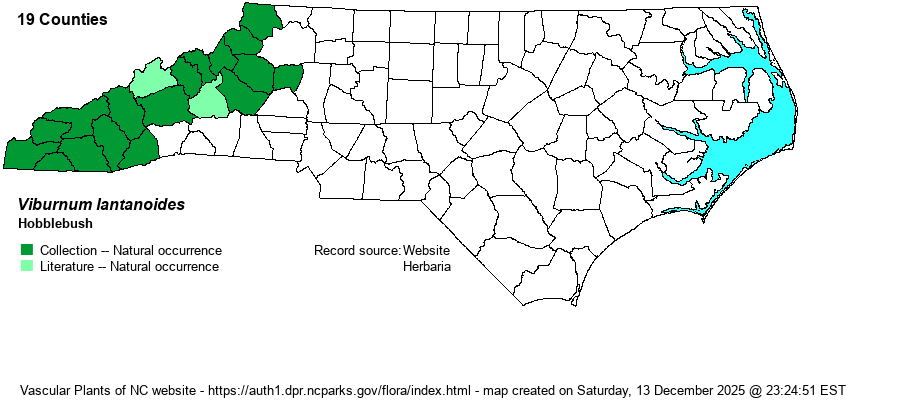| Author | Michaux | |
| Distribution | Occurs throughout the Mountains, and ranges eastward into the Piedmont in the Brushy Mountains (Alexander County).
This is a Northern species occurring over eastern Canada southward to central PA and northeastern OH; however, its range south of PA is restricted to the Appalachians, to extreme northern GA. | |
| Abundance | Fairly common to common at higher elevations, mainly over 4500 feet; much less common down to about 3500 feet. Very rare in the Piedmont part of the range. | |
| Habitat | This is a species of cool and moist habitats in NC. It grows in spruce-fir forests, boulderfield forests, along seepages at higher elevations, and various other moist and often rocky forests, including Northern Hardwood Forests. |
| Phenology | Blooms from April to early June; fruits in June and July. | |
| Identification | This is a fairly familiar and distinctive deciduous shrub, growing to about 6-8 feet tall on average. It has quite large and heart-shaped opposite leaves, with slightly serrated margins, growing to about 5-6 inches long -- with the appearance of leaves of a basswood (Tilia) or a mulberry (Morus). Such opposite leaves should identify the species, but it also has an unusual inflorescence for a Viburnum, but quite like a hydrangea (Hydrangea spp.). At the tip of some branches grows a broad and convex cluster of small white flowers, but around the margins are scattered quite large but sterile flowers each about 1/2-inch across. Hydrangeas also have large and opposite leaves, but the leaves of those species are elliptical in shape and are not heart-shaped with cordate bases, and are clearly longer than wide. | |
| Taxonomic Comments | For much of the last century, the species was named as Viburnum alnifolium. Nearly all more recent references have it now as V. lantanoides.
| |
| Other Common Name(s) | Moosewood, Witch's-hobble, Hobbleberry | |
| State Rank | S4 | |
| Global Rank | G5 | |
| State Status | | |
| US Status | | |
| USACE-agcp | FAC link |
| USACE-emp | FACU link |

